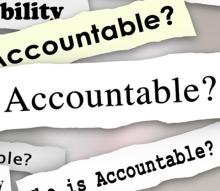
Guest author: Shawn Mullen, PhD, Deputy Director, Office of Postdoctoral Services, Office of Intramural Training & Education (OITE) LinkedIn ![]() can be a powerful tool in developing and maintaining a professional network. If used properly it will afford you a means to tap into potential collaborative relationships, investigate career paths, and often, establish connections that will ultimately help you find that next great position. As someone whose professional focus is providing fellows with resources and helping them to develop career skills, I work with many fellows who are currently using this networking technology. However, I think more fellows can further tap into LinkedIn’s potential to aid you in establishing key, and potentially fruitful, connections. While you could spend days reading articles and blogs that discuss using LinkedIn in awe-inspiring ways, what you actually need to keep in mind as you use LinkedIn to build your professional network are two simple concepts: to act strategically and to remember your manners. LinkedIn is about being strategic and establishing quality connections that will deliver results over time. Before impetuously sending an invitation to someone to join your network (and mind you, this is very easy to do, what with LinkedIn’s convenient “People You May Know” function tempting you to hit “invite” as if it were some irresistible death-by-chocolate desert), ask yourself, “Would establishing this connection provide mutual benefit over time?” Remember, it is what both of you bring to the table that will make it a worthwhile contact. Once you make the strategic decision that this person would be a good contact, etiquette comes into play. First and foremost, avoid sending the “out of the blue invite.” My mother taught me never to accept invitations from strangers, and for the most part that bit of advice has worked well for me since childhood. Lay the groundwork before you send that invitation. Use a mutual contact to introduce you. If no mutual contact exists, e-mail or phone, to introduce yourself and discuss your objectives. Once a dialogue has been established you can ask to send an invitation. The other piece of etiquette you should follow is to always—let me say that again for those way in the back: ALWAYS—personalize your invite. Avoid the default language that is provided. Even (or perhaps especially) if you are good friends with the person and eat lunch with them every day, personalize the invite. Remind them of where and when you met, and include your reasoning for why you think that being in one another’s network would be mutually beneficial. A little personalized attention goes a long way in establishing connections, even electronic ones.
can be a powerful tool in developing and maintaining a professional network. If used properly it will afford you a means to tap into potential collaborative relationships, investigate career paths, and often, establish connections that will ultimately help you find that next great position. As someone whose professional focus is providing fellows with resources and helping them to develop career skills, I work with many fellows who are currently using this networking technology. However, I think more fellows can further tap into LinkedIn’s potential to aid you in establishing key, and potentially fruitful, connections. While you could spend days reading articles and blogs that discuss using LinkedIn in awe-inspiring ways, what you actually need to keep in mind as you use LinkedIn to build your professional network are two simple concepts: to act strategically and to remember your manners. LinkedIn is about being strategic and establishing quality connections that will deliver results over time. Before impetuously sending an invitation to someone to join your network (and mind you, this is very easy to do, what with LinkedIn’s convenient “People You May Know” function tempting you to hit “invite” as if it were some irresistible death-by-chocolate desert), ask yourself, “Would establishing this connection provide mutual benefit over time?” Remember, it is what both of you bring to the table that will make it a worthwhile contact. Once you make the strategic decision that this person would be a good contact, etiquette comes into play. First and foremost, avoid sending the “out of the blue invite.” My mother taught me never to accept invitations from strangers, and for the most part that bit of advice has worked well for me since childhood. Lay the groundwork before you send that invitation. Use a mutual contact to introduce you. If no mutual contact exists, e-mail or phone, to introduce yourself and discuss your objectives. Once a dialogue has been established you can ask to send an invitation. The other piece of etiquette you should follow is to always—let me say that again for those way in the back: ALWAYS—personalize your invite. Avoid the default language that is provided. Even (or perhaps especially) if you are good friends with the person and eat lunch with them every day, personalize the invite. Remind them of where and when you met, and include your reasoning for why you think that being in one another’s network would be mutually beneficial. A little personalized attention goes a long way in establishing connections, even electronic ones.




